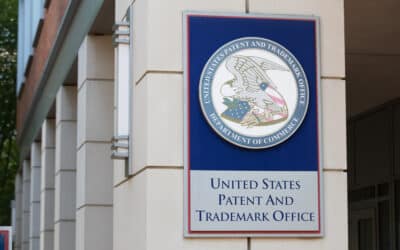Artificial intelligence (AI) has arrived at the US Supreme Court—kind of. Though the term “artificial intelligence” has not yet appeared in the U.S. Reports, Chief Justice John Roberts’ year-end report on the federal judiciary talks about how AI will impact the law.
Chief Justice Roberts writes that “[m]achines cannot fully replace key actors in court,” especially the role of judges. Trial judges must assess credibility and make fairness determinations; appellate judges may determine not only what existing law says today, but how it should “develop in new areas.” “[H]uman judges,” Chief Justice Roberts predicts, “will be around for a while.”
On the other hand, Chief Justice Roberts writes, “[p]roponents of AI tout its potential to increase access to justice, particularly for litigants with limited resources” and “those who cannot afford a lawyer.”
AI is not the only recent advancement that addresses the extraordinarily high cost of legal services. Our legal system is also being transformed by litigation funding and litigation insurance, which allow litigants to offset the mounting costs of litigation by sharing risk with third-party funders and insurers. Indeed, at least before AI burst onto the scene, litigation funding was called “likely the most important development in civil justice of our time.” Bloomberg Law recently listed litigation funding as one of the six most important legal issues to watch in the litigation space in 2024, alongside hot button issues like abortion and gender identity.
How, then, does the revolution of AI interact with the transformative impact of litigation funding? It’s too early to say for sure, but here are four suggestions as we head into 2024.
Better, Quicker Funding Decisions
The first impact of AI and funding is likely that the technology will dramatically increase the efficiency with which litigation funders operate.
One common criticism of litigation funding is that the diligence process is too slow. AI should accelerate funders’ time to decision, as they bring to bear machine-learning tools to more quickly analyze cases. Speeding up the diligence process will make the funding application process more efficient and client-friendly.
AI tools should also increase the accuracy with which funding determinations are made, as funders—and the lawyers submitting matters for funding—harness the power of AI to better predict dispute outcomes. This should in the long run decrease the cost of litigation funding, since machine learning input will decrease the risk that funders are taking.
Decreased Demand for Funding?
Litigation funding began as a response to an endemic problem: litigation is really, really expensive.
AI promises to alleviate that problem by reducing the cost of litigation—even if lawyers still need to cite check AI’s suggestions. In some instances, then, AI is likely to reduce or eliminate the need for litigation funding, particularly for those litigants who are liquidity-constrained and lack resources to fund today’s multi-million-dollar litigations.
The truly impecunious, or the increasing number of well-capitalized litigants who use funding for risk management, are still likely to use litigation funding. But the total amount they require for funding may decrease, as the cost of litigations goes down.
Overlooked Cases May Be Funded
On the other hand, AI may enable funders to finance matters that are currently overlooked by most litigation funders.
For example, many funders do not finance smaller cases that require only a few hundred thousand dollars to litigate. The cost of reviewing those matters is simply too high relative to the possible return. As the cost of studying matters decreases, however, funders may find these opportunities to be attractive.
Meanwhile, there is also a thin market for especially expensive cases, particularly high-risk and high-cost matters like sprawling antitrust disputes. As the cost of legal services declines, so too might the cost of litigating those cases. The strongest of these cases might get increased access to litigation funding.
AI may further assist litigation funders in better identifying claims that ought to be brought and can benefit from funding. This can include either the identification of filed cases that are good candidates for funding, or the identification through publicly available documents of latent claims that should be filed.
Beyond Plaintiff-Side Litigation
Tracking all this is yet a third revolution in the law: relaxed restrictions on law firm ownership by third parties. In 2020, Arizona eliminated state legal ethics Rule 5.4, the rule that bans non-lawyer ownership, in an effort to “promote business innovation in providing legal services at affordable prices.” Utah has a regulatory sandbox with relaxed restrictions, and other states may follow suit.
Litigation funding typically focuses on just that: litigation—and usually plaintiff-side litigation to boot. The elimination of bans on non-lawyer ownership of law firms will allow third-party capital and AI to help reduce the cost of legal services not only in litigation but also in other areas, including defense litigation, corporate work, trusts and estates, and so on. This will be a very good thing for people and companies who need greater access to those legal services.
This article was originally published by BloombergLaw.com






